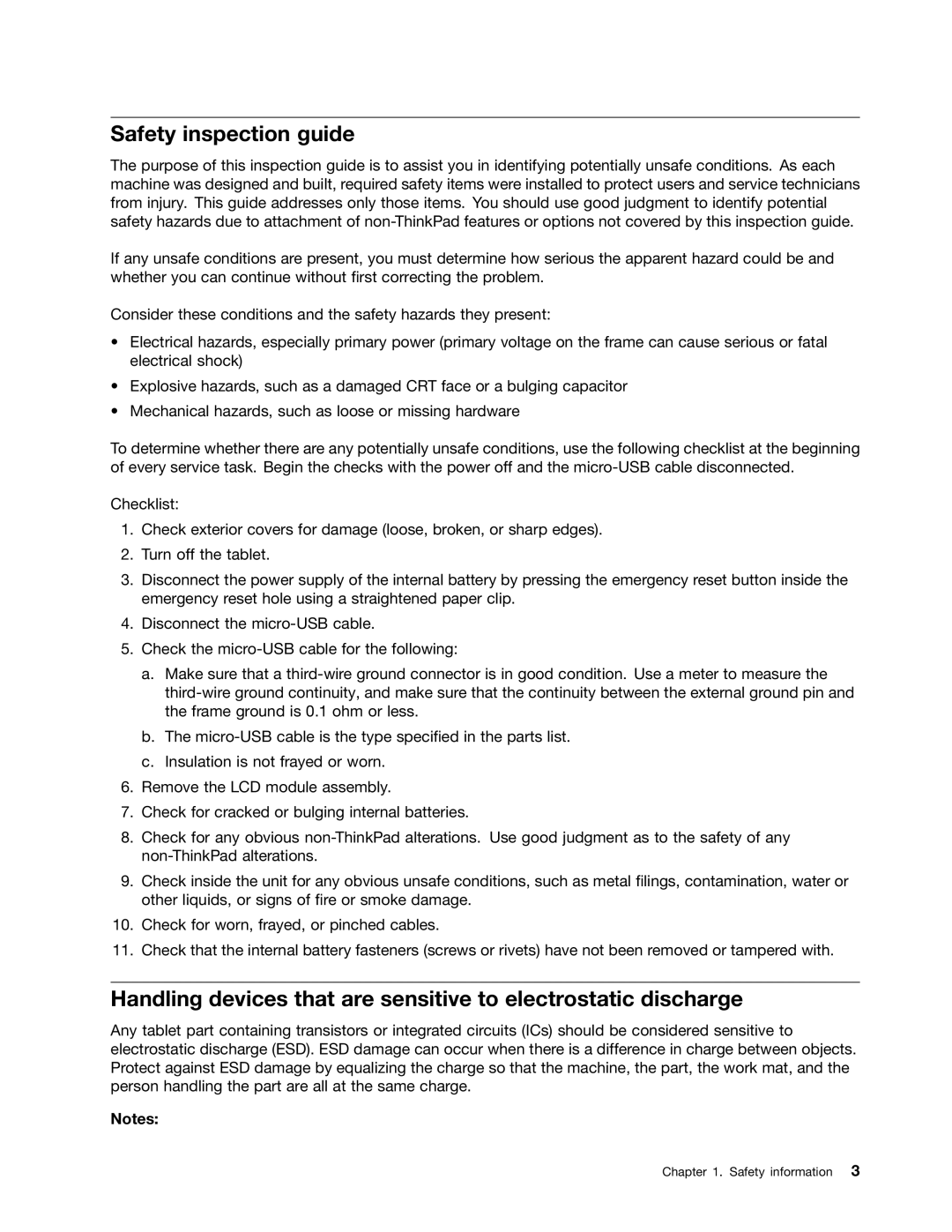
Safety inspection guide
The purpose of this inspection guide is to assist you in identifying potentially unsafe conditions. As each machine was designed and built, required safety items were installed to protect users and service technicians from injury. This guide addresses only those items. You should use good judgment to identify potential safety hazards due to attachment of
If any unsafe conditions are present, you must determine how serious the apparent hazard could be and whether you can continue without first correcting the problem.
Consider these conditions and the safety hazards they present:
•Electrical hazards, especially primary power (primary voltage on the frame can cause serious or fatal electrical shock)
•Explosive hazards, such as a damaged CRT face or a bulging capacitor
•Mechanical hazards, such as loose or missing hardware
To determine whether there are any potentially unsafe conditions, use the following checklist at the beginning of every service task. Begin the checks with the power off and the
Checklist:
1.Check exterior covers for damage (loose, broken, or sharp edges).
2.Turn off the tablet.
3.Disconnect the power supply of the internal battery by pressing the emergency reset button inside the emergency reset hole using a straightened paper clip.
4.Disconnect the
5.Check the
a.Make sure that a
b.The
c.Insulation is not frayed or worn.
6.Remove the LCD module assembly.
7.Check for cracked or bulging internal batteries.
8.Check for any obvious
9.Check inside the unit for any obvious unsafe conditions, such as metal filings, contamination, water or other liquids, or signs of fire or smoke damage.
10.Check for worn, frayed, or pinched cables.
11.Check that the internal battery fasteners (screws or rivets) have not been removed or tampered with.
Handling devices that are sensitive to electrostatic discharge
Any tablet part containing transistors or integrated circuits (ICs) should be considered sensitive to electrostatic discharge (ESD). ESD damage can occur when there is a difference in charge between objects. Protect against ESD damage by equalizing the charge so that the machine, the part, the work mat, and the person handling the part are all at the same charge.
Notes:
Chapter 1. Safety information 3
